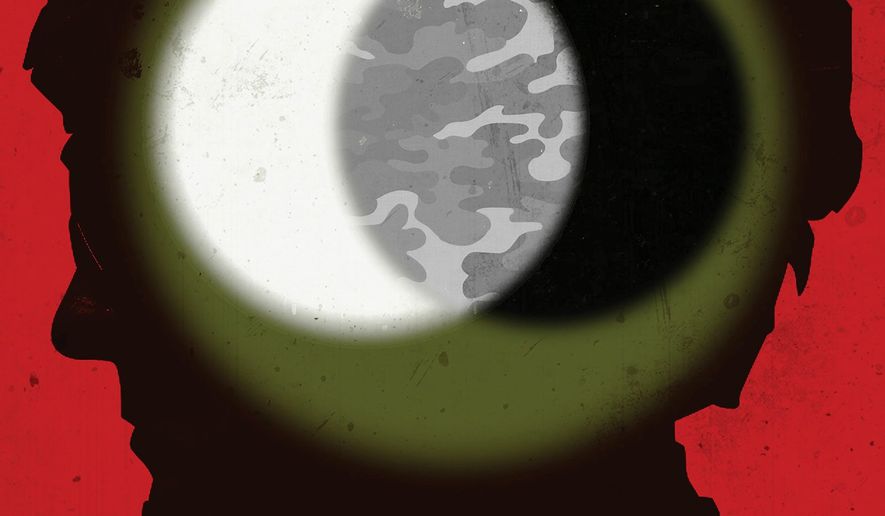OPINION:
You heard it last week from smart people on both the left and right. President Trump’s droning of Gen. Qassem Soleimani put America “on the brink of another war,” wrote Martin Indyk, a distinguished fellow at the Council on Foreign Relations. Echoed Fox News’ Tucker Carlson: “It looked like we were on the brink there!”
Let’s think about that, shall we? Soleimani was the commander of the Quds Force, an army that operates beyond Iran’s borders, hunting and killing anyone and everyone Iran’s rulers deem enemies.
He commanded both uniformed Iranian soldiers and militias comprised of Afghans, Pakistanis, Uzbeks and other Shiites of the violent extremist persuasion. He facilitated the killing of more than 600 Americans and hundreds of thousands of others. Can we agree that when he flew to Baghdad on Jan. 3 it probably wasn’t to grab dinner and a movie with a friend?
In response to the general’s unexpected demise, Supreme Leader Ali Khamenei launched missiles at Iraqi bases hosting American troops who had been warned to take cover. Ayatollah Khamenei then promptly announced he was finished — at least for now.
So, on this basis, is it more logical to conclude that President Trump (1) put us “on the brink” of war, or (2) that he began to re-establish the deterrence the United States has lost after years of being slapped by Iran’s rulers and then turning the other cheek?
Perhaps you say, OK. But what if the ayatollah had decided to climb the escalation ladder? Wouldn’t American boots have been in downtown Tehran by Valentine’s Day? No. Mr. Trump would have considered a range of “off-shore” options, from sinking the ayatollah’s navy in port, to wiping out his combat aircraft on the ground, to destroying facilities designed for the illicit development of nuclear weapons.
That brings us to the second and even more consequential misconception implied by the “brink of war” theory: That until Jan. 3 we were at peace.
Forty-one Januaries ago, Iran underwent an Islamic Revolution led by Ayatollah Ruhollah Khomeini. In April 1979, Iran was declared an Islamic Republic. In the fall, the ayatollah’s followers attacked the “Great Satan” by seizing the U.S. embassy and taking American diplomats hostage.
Those hostages were released 39 years ago this month after the election of a new American president who, the theocrats feared, might respond more effectively than had his predecessor. But for their acts of war, Iran’s rules never paid a price.
So, they continued to wage what is known in Wonk World as a “gray-zone” war. Such wars seldom start with a declaration of war and never end with the surrender of a sword. Among the distinguishing characteristics: The use of hybrid or asymmetric weapons and tactics, including the utilization of proxies to establish plausible deniability.
In April 1983, a suicide bomber hit the U.S. Embassy in Beirut, killing 63 people, the deadliest attack on a U.S. diplomatic mission until that time. U.S. District Judge Royce Lamberth determined that the bombing was carried out by Hezbollah, funded and instructed by Iran’s rulers.
In October of the same year, Hezbollah bombed buildings housing U.S. and French service members in Beirut, killing 241 U.S. military personnel and 58 French soldiers.
In December, terrorists backed by Tehran bombed the U.S. and French embassies in Kuwait City. A Kuwaiti government spokesman called the attacks “the first concentrated Iranian operation to export the revolution and destabilize the Persian Gulf.”
Over the years since, other attacks against American embassies, forces and civilians followed in Lebanon, Saudi Arabia, Iraq and elsewhere.
What did Iran’s rulers achieve? Today, Lebanon is ruled — for all intents and purposes — by Hezbollah, their proxy. The regime also holds sway in Syria, instructs Hamas and Islamic Jihad in Gaza, backs the Houthi rebels in Yemen, and intends to dominate Iraq. Long term, “Death to America!” is the intention. The acquisition of nuclear weapons and missiles to deliver them would provide a capability.
In his recently published book, “Call Sign Chaos,” former Defense Secretary Jim Mattis recalls that when he led U.S. Central Command from 2010 to 2013, he understood that “we faced two principal adversaries: stateless Sunni Islamist terrorists and the revolutionary Shiite regime of Iran, the most destabilizing country in the region.” He adds: “Iran was by far the more deadly of the two threats.”
Gen. Mattis was disappointed when President Obama treated the foiled 2011 Iranian plot to bomb a restaurant in Washington — yet another “act of war” — as merely “a law enforcement violation, jailing the low-level courier” and making no attempt to hold the regime accountable.
Mr. Obama went on to conclude a deal that gave Iran’s rulers a $150 billion windfall. If they were appeased, they didn’t show it.
Mr. Trump exited the deal. France, Britain and Germany remained. Nevertheless, in June 2018, French authorities foiled a plot by Tehran to bomb a gathering of Iranian dissidents in Paris.
In response, the French froze the assets of two suspected regime intelligence operatives. You think that caused Soleimani and Ayatollah Khomenei to shiver in their shoes?
Here’s what we should know by now: Gray-zone war is the new normal, the new black, if you will. After four decades, we ought to have settled on a strategy to counter this threat.
But when a distinguished scholar on the left and a popular television host on the right don’t even grasp the reality — insisting instead that striking back at those attacking us could put us on “the brink” of war — it becomes apparent why we have made so little progress in this conflict.
• Clifford D. May is founder and president of the Foundation for Defense of Democracies (FDD) and a columnist for The Washington Times.




Please read our comment policy before commenting.